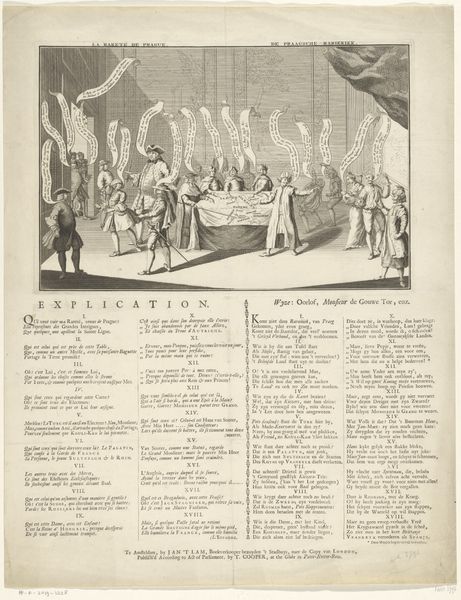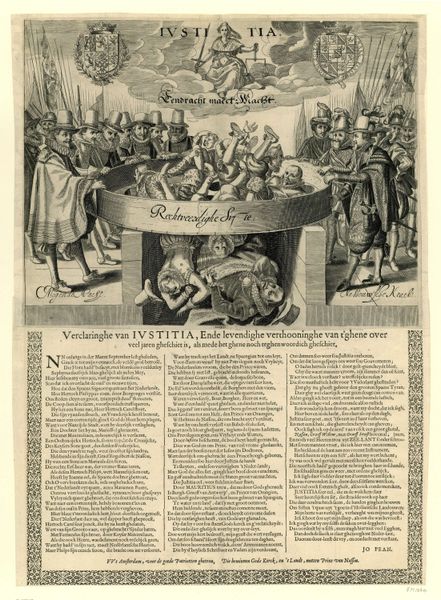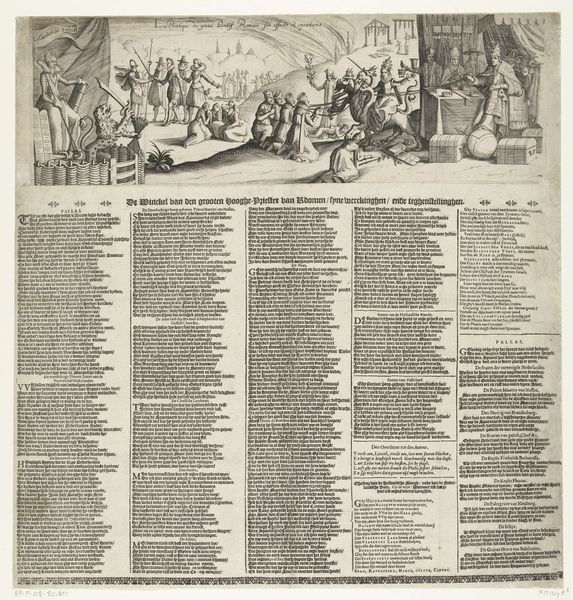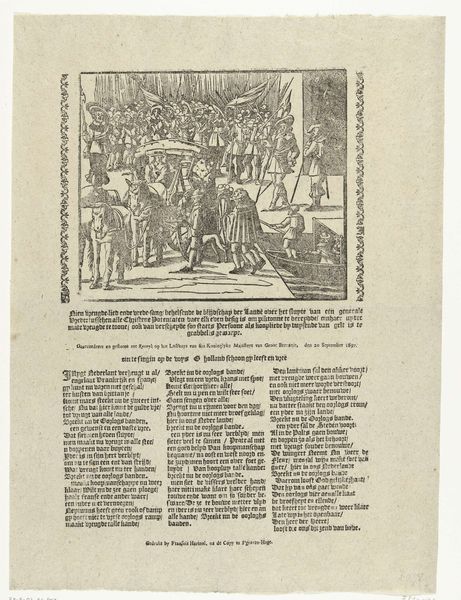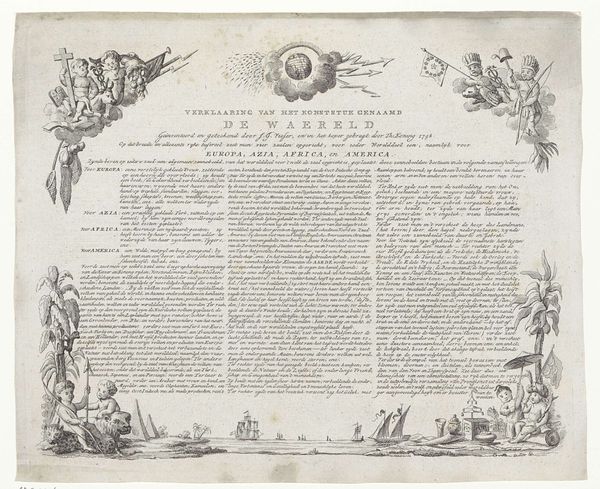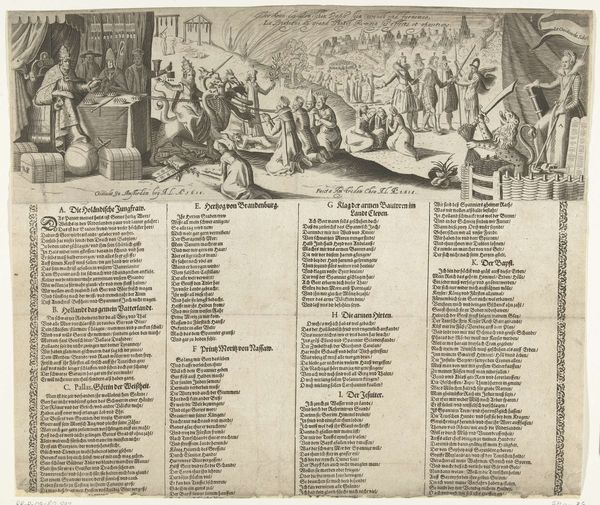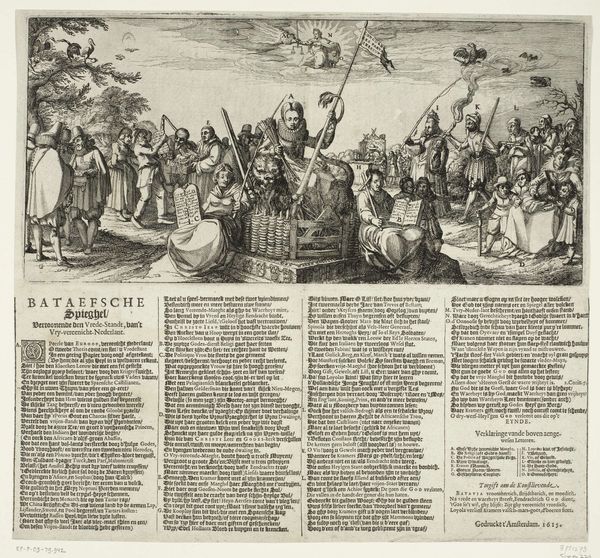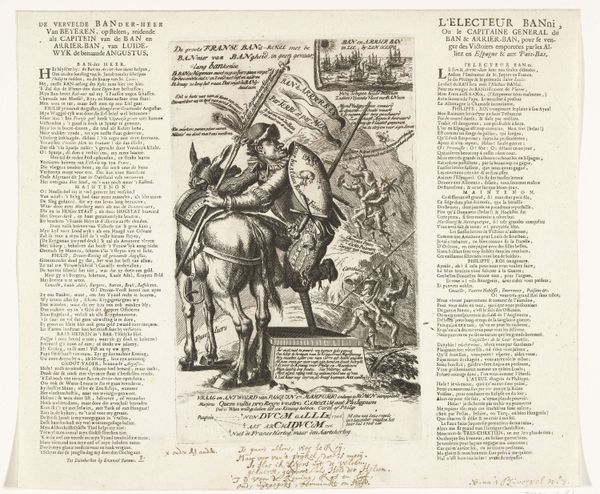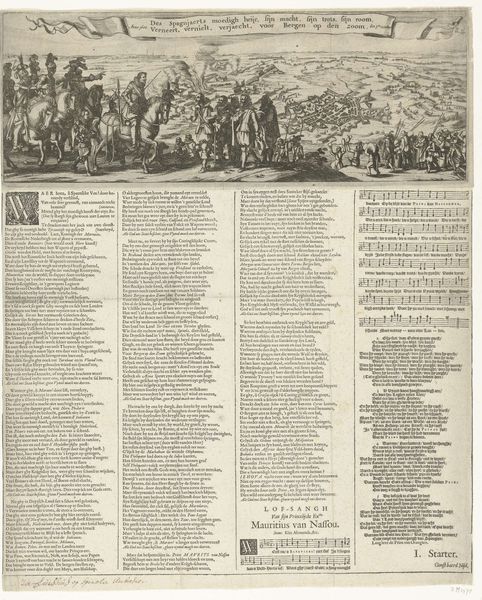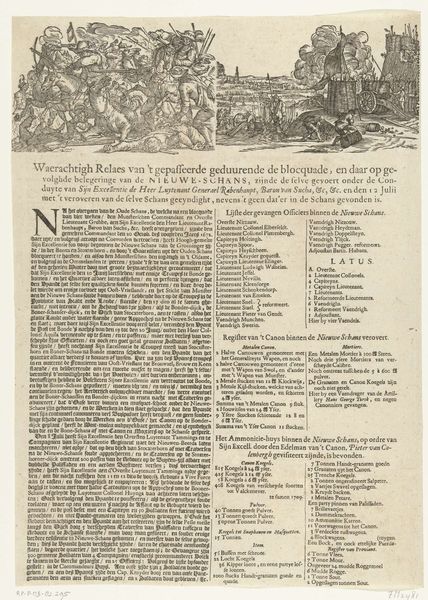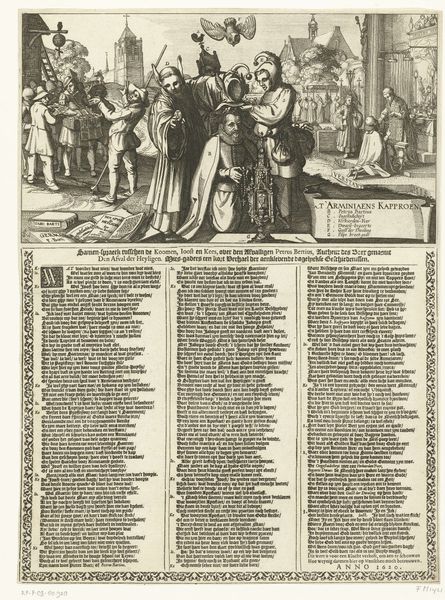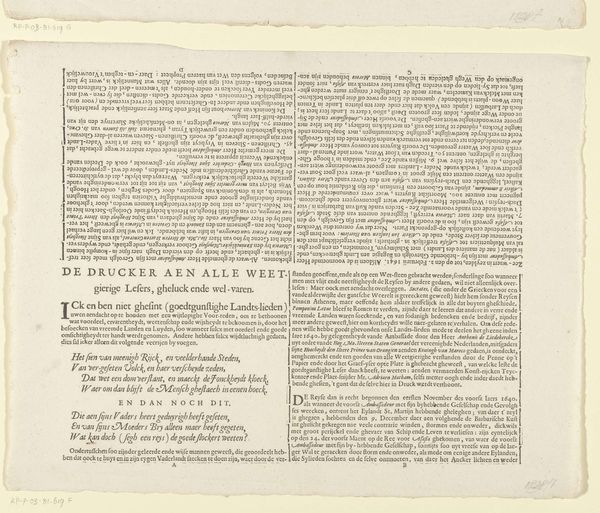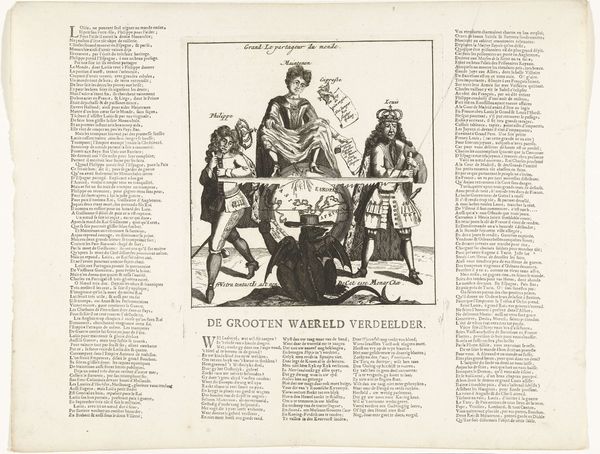
Spotprent op Franse verliezen in Brabant, Barcelona en Italië, 1706 1706
0:00
0:00
print, engraving
#
narrative-art
#
baroque
# print
#
history-painting
#
engraving
Dimensions: height 312 mm, width 399 mm
Copyright: Rijks Museum: Open Domain
Curator: This striking print, dating from 1706, is titled "Spotprent op Franse verliezen in Brabant, Barcelona en Italië." The Rijksmuseum houses this example, and it's believed to be by an anonymous artist. It employs both engraving and printmaking techniques to convey a pointed message about French military setbacks. Editor: It’s quite busy, isn't it? All those tiny figures packed together...it makes it feel rather frenetic and chaotic. The linear quality of the engraving really emphasizes that busyness, almost like an elaborate, overcrowded textile design rendered in ink. Curator: Absolutely, the composition reinforces the narrative chaos. You see allegorical figures, texts in Dutch… The visual language speaks to the political context—France's struggles on multiple fronts. I see symbolic elements referencing their defeats. The engraving medium, with its potential for wide distribution, was crucial in shaping public opinion at the time. Editor: I'm interested in the actual making of this. Think about the labour involved – the careful carving, the multiple print runs. It was clearly designed for mass consumption. How did this broad availability change the dynamics of information and maybe propaganda back then? Did its circulation rely more on print shop networks in Amsterdam than royal decrees, I wonder? Curator: Good point. The symbolism, though, draws on a deeper cultural memory. Look at the central figures, they almost perform on a stage: their movements embody a familiar mockery of defeated rulers. I'm intrigued how the artist links contemporary failures to broader themes of fallen empires through image, suggesting not just defeat, but a crisis in France's legitimacy. Editor: Exactly, but that 'performance' relies on accessible forms. Think about who purchased this print – who displayed it and what purpose. Its symbolism has been circulated through existing communication and distribution systems from paper quality to the laboring hands setting up print. These small-scale, everyday objects became nodes of both production and political exchange. Curator: Reflecting on this piece, I appreciate how it captures a moment of shifting power. Beyond mere recording of events, it tries to negotiate France's place within a much older historical script. Editor: It does provoke a reassessment on how seemingly fragile artworks like this carry the weight of historical change, molded not only by high symbolism but everyday encounters with objects of mass production and labor of its creation.
Comments
No comments
Be the first to comment and join the conversation on the ultimate creative platform.
